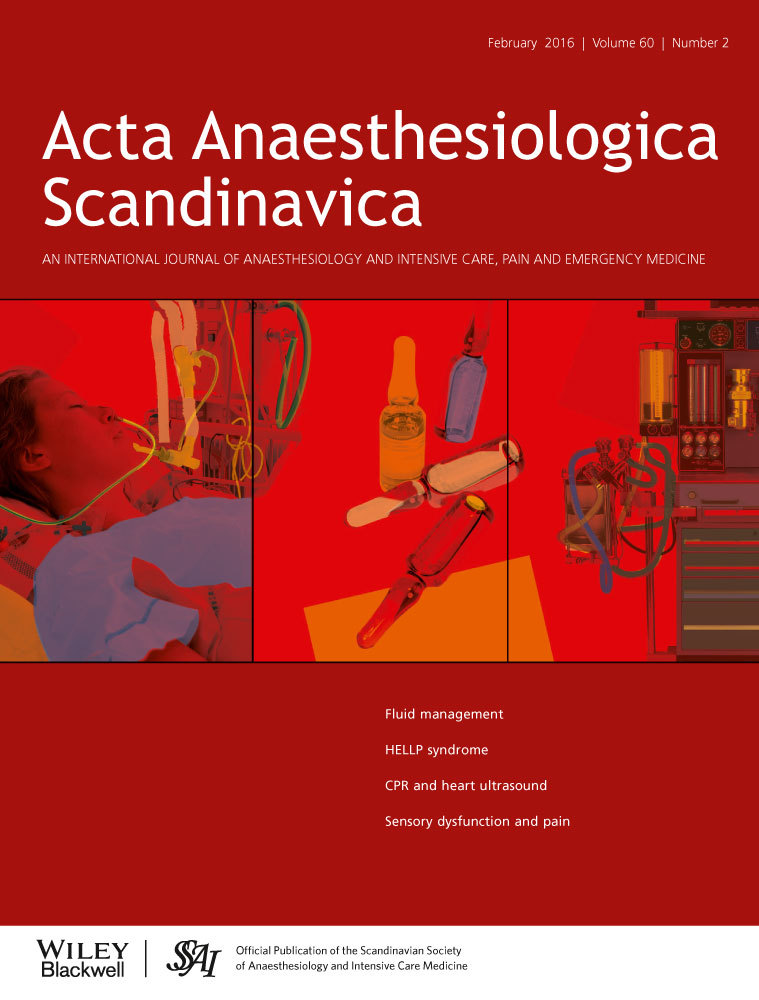Association between sensory dysfunction and pain 1 week after breast cancer surgery: a psychophysical study
Correspondence
K. G. Andersen, Section for Surgical Pathophysiology, 7621 Rigshospitalet, University of Copenhagen, Blegdamsvej 9, DK-2100 Copenhagen, Denmark
E-mail: [email protected]
Conflicts of interest:
The authors declare no conflicts of interest.
Funding:
This study was funded by a grant from the Danish Cancer Society, and the study is part of the Europain Collaboration, which has received support from the Innovative Medicines Initiative Joint Undertaking, under grant agreement no 115007, resources of which are composed of financial contribution from the European Union's Seventh Framework Programme (FP7/2007-2013) and EFPIA companies’ in kind contribution.
Abstract
Background
Breast cancer patients treated with axillary lymph node dissection (ALND) have a higher risk of both acute and persistent pain than those treated with sentinel lymph node biopsy (SLNB). This could be attributed to a higher risk of nerve injury with ALND. We hypothesized that (1) pain patients have more pronounced sensory dysfunction than pain-free patients, (2) ALND have more sensory dysfunction and pain than SLNB patients and (3) patients with preserved intercostobrachial nerve (ICBN) preservation have less sensory dysfunction compared to a sectioned ICBN.
Methods
Twenty-seven patients treated with ALND and 27 with SLNB examined with a standardized Quantitative Sensory Testing (QST) protocol, including sensory mapping, mechanical and thermal thresholds, as well as recording intraoperative ICBN handling and pain status 1 week post-operative.
Results
The area of cold hypoaesthesia was significantly associated with movement-related pain (P = 0.004), with a similar tendency for warmth (P = 0.018) and brush (P = 0.030) hypoaesthesia areas. 14 (26%) of the patients had moderate/severe pain at rest and 13 (24%) during movement without differences between ALND and SLNB, but ALND was associated with more sensory dysfunction than SLNB. Patients with sectioned ICBN reported lower pain intensity than those with preserved ICBN (P = 0.005), but without differences in sensory dysfunction.
Conclusion
Pain was increased in patients having larger areas of hypoaesthesia and reduced in patients where ICBN-section was done. Sensory dysfunction was related to extent of axillary surgery, but not with ICBN handling. Our data suggest that acute pain after breast cancer surgery may be related to nerve injury.




